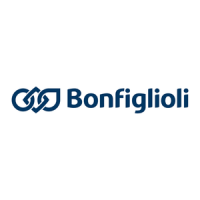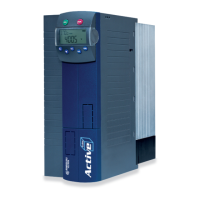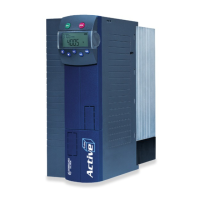
Do you have a question about the BONFIGLIOLI ACTIVE Cube ACU 201-11 and is the answer not in the manual?
| Output Frequency | 0-599 Hz |
|---|---|
| Overload Capacity | 150% for 60 seconds |
| Protection Degree | IP20 |
| Altitude | Up to 1000 m without derating |
| Input Frequency | 50/60 Hz |
| Output Voltage | 0-Vinput |
| Control Type | V/F control, Sensorless Vector Control |
| Communication Interfaces | CANopen, Modbus |
| Protection Class | Class I |
| Ambient Temperature | -10 to 50 °C |
| Relative Humidity | 5% to 95% non-condensing |
Provides safety instructions for the STO function, emphasizing proper installation and commissioning by qualified staff.
Provides general technical specifications including CE conformity, EMC directives, UL approval, safety function, and ambient conditions.
Provides measures for achieving electromagnetic compatibility (EMI) for operation in industrial applications.
Details conductor cross-section dimensioning and provides typical cross-sections for mains, PE, and motor cables.
Details how to select, display, and edit parameters, including navigation and saving procedures.
Explains the function of copying parameter values between the control unit and the frequency inverter (upload/download).
Provides safety checks and procedures before switching on the mains voltage for the frequency inverter.
Guides through the parameter settings for application-specific configuration using the control unit's guided commissioning.
Explains Configuration 30, which determines control input/output assignment and software functions.
Details how to set rated motor parameters from the rating plate for control functions and methods.
Covers additional motor data required for field-oriented control, including stator resistance and leakage coefficient.
Explains connection of speed sensor 1 to digital terminals and operation modes for evaluation.
Describes parameterization of starting behavior, including flux formation time and current for different configurations.
Defines stopping behavior options (free stopping, hold, DC brakes, emergency stop) via Operation mode 630.
Explains direct current braking for stopping behaviors 3, 6, 7 and search run function, including braking current and time.
Describes synchronization of motor speed to a rotating drive after fault switch-off, using operation modes 1-15.
Explains positioning functions: Reference positioning and Axle positioning, activated via Operation mode 458.
Defines admissible load behavior based on technical data and ambient conditions, setting Warning Limit Short Term Ixt and Long Term Ixt.
Covers ambient conditions and energy dissipation, setting Warning Limit Heat Sink Temp. and Warning Limit Inside Temp.
Sets the maximum allowed output frequency and the switch-off limit for Stator frequency or Actual frequency.
Explains motor temperature monitoring via control terminals and parameter Motor Temp. Operation Mode 570.
Describes monitoring for phase failures in motor or mains to prevent damage, adjusted via Phase supervision 576.
Defines output frequency and speed setting range using Minimum frequency 418 and Maximum frequency 419 parameters.
Defines how quickly the frequency changes based on reference value, start, stop, or brake commands.
Describes controlling motor speed via digital signals or control unit keys, with functions assigned to up/down commands.
Details MFI1 configuration as voltage, current, or digital input, linking to software functions via Operation mode 452.
Explains MFO1 configuration as digital, analog, or repetition frequency output, linked to software modules.
Sets current limits to avoid inadmissible load and prevent fault switch-off, extending the current controller functionality.
Monitors DC link voltage, controlling it to a set limit and providing power failure regulation.
Provides PID controller functionality for applications like pressure, volume flow, or speed control.
Supplements V/f characteristic behavior with slip compensation and current limit value controller functions.
Details inner control loops for current controllers and cascade control based on machine model and parameter identification.
Describes connection of external brake resistor and dimensioning of the brake resistor.
Details monitoring mechanisms for motor temperature and overload protection, including direct and indirect monitoring.
Details functions for adapted implementation of generator energy into heat and motor chopper control.
Explains the motor chopper function for adapted implementation of generator energy into heat.
Lists error codes and their meanings, categorized by groups such as Overload, Heat Sink, Motor Connection, and Output current.











